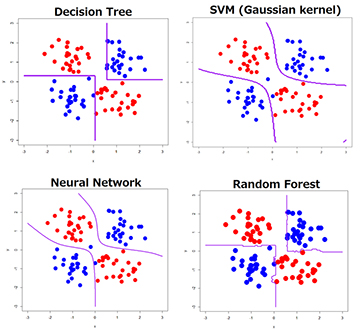
#Here, we see that the feature used at the top split (“worst radius”) is by far the most important feature. Plt.xticks(range(),cancer.feature_names,rotation=90)

A photo by Author In this article, the decision tree algorithm is the base model for all other tree models. Plt.plot(tree01.feature_importances_,'o') Member-only Machine Learning Fully Explained Decision Tree Classification with Python In-depth study of decision tree for classification problem Decision Tree.#The most commonly used summary is feature importance #We also can derive to summarize the workings of the tree.
#Decision tree python visualization install#
Need to install graphviz seperately at first Decision trees are extremely intuitive ways to classify or label objects: you simply ask a series of questions designed to zero-in on the classification. Decision trees are an intuitive supervised machine learning algorithm that allows you to classify data with high degrees of accuracy.
#Decision tree python visualization how to#
#visualize and analyze the tree model#Įxport_graphviz(tree,out_file="mytree.dot",class_names=,įeature_names=cancer.feature_names,impurity=False,filled=True) ApIn this tutorial, you’ll learn how to create a decision tree classifier using Sklearn and Python. Print('\n'"accuracy on test set 01: %f" % tree01.score(X_test, y_test)) Print('\n'"accuracy on training set 01: %f" % tree01.score(X_train, y_train)) Tree01=DecisionTreeClassifier(max_depth=4,random_state=0) #apply pre-pruning to the tree, which will stop developing the tree before we This capability is provided in the plottree () function that takes a trained model as the first argument, for example: 1 plottree(model) This plots the first tree in the model (the tree at index 0). The decision tree visualization would help you to. The XGBoost Python API provides a function for plotting decision trees within a trained XGBoost model. Print('\n'"accuracy on test set: %f" % tree.score(X_test, y_test)) The python code example would use Sklearn IRIS dataset (classification) for illustration purpose. Print("accuracy on training set: %f" % tree.score(X_train, y_train)) Scikit-learn only implements pre-pruning, not post- pruning. #Decision trees in scikit-learn are implemented in the DecisionTreeRegressor Tree=DecisionTreeClassifier(random_state=0)

X_train, X_test, y_train, y_test = train_test_split(Ĭancer.data, cancer.target, stratify=cancer.target, random_state=2017) Mueller and Sarah Guidoįrom ee import DecisionTreeClassifierįrom sklearn.model_selection import train_test_splitįrom sklearn.datasets import load_breast_cancer Most of the code comes from the as book of last article. This tree leads to twenty formats representing the most common dataset types. Following the last article, we can also use decision tree to evaluate the relationship of breast cancer and all the features within the data. From Data to Viz provides a decision tree based on input data format.


 0 kommentar(er)
0 kommentar(er)
